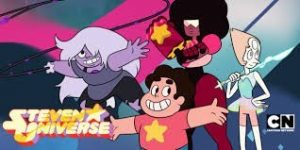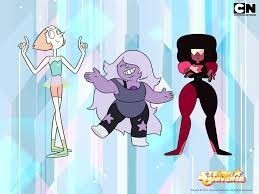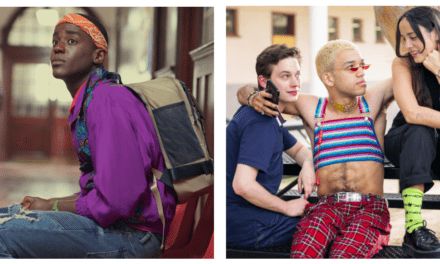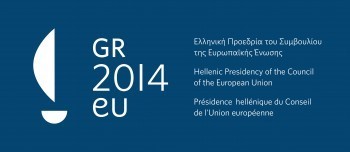Steven Universe, a Cartoon Network series which premièred in 2013, is about a boy named Steven who lives with a trio of female warrior/superheroes from space. It came to my attention via Twitter friends’ enthusiasm for the many, diverse, and dimensional female characters in the series and the pleasures of its (semi-)serialised narrative. These Twitter friends were right, and before starting to write this post I’d nearly finished watching the series for the second time.

In this post I will share my enthusiasm for the series: it’s a sweet, uncynical, and regularly subtle show, produced in easily-consumable 11(ish)-minute episodes. Once I obtained a copy of the first season, I found myself watching the entire season over the course of a few days. I watched on my own, coming to the series with an interest in science fiction, rather than as a specialist in children’s television. What follows is a discussion of the pleasures the show offers, in a personal response to the series as an adult viewer approaching it as a cult text.
The title character, Steven Universe, is the pre-teen son of Greg Universe and the absent Rose Quartz. (Rose ‘gave up her physical form’ so Steven could exist, though how or why hasn’t been explained.) Steven lives in a house by a beach with Garnet, Amethyst, and Pearl – three ‘Crystal Gems’, who, as we gradually discover through the series, are thousands of years old and originally from another planet. To the other residents of Beach City, the Gems appear to be a trio of slightly odd, mysterious women. In the course of the first season, Steven’s enthusiasm for making friends in the town seems to push the three Gems out of a self-imposed isolation to interact with their human neighbours.
Steven’s mother, Rose Quartz was one of the Gems: Steven has inherited her gem, which is located in place of his navel (the placement of the gem is apparently unique to each Gem character). At the start of the series, neither the Gems nor Steven know if he has also inherited his mother’s powers. Much of his character development derives from discovering his abilities, sometimes accidentally, and learning how to use them. For example, in Steven, Rose’s healing tears become healing spit.
The semi-serialised format of Steven Universe treads the same ground as Nickelodeon’s Avatar: The Last Airbender (and sequel series The Legend of Korra), which in turn were influenced by a host of Japanese predecessors. The Nickelodeon series are properly serialised, whereas Steven Universe is more episodic. However, unlike what one might expect from a typical cartoon, characters don’t suffer amnesia between episodes. Lessons learned in one episode are not immediately forgotten, and the details of the show’s world slowly build to reveal a threatened recurrence of an interstellar civil war. It is worth noting that this characteristic of ‘quality television’ – a complex narrative that unfolds over the course of many episodes – is one pleasure of watching Steven Universe episodes in sequence.
The series balances its exposition nicely between dialogue motivated by Steven growing to an age where he starts to ask questions of the other Gems about Rose’s history – answering questions for the audience and for the boy – and times when Steven’s friends/neighbours query something odd about his life that we the viewer had simply accepted as part of the show’s genre work. (For example, quite late in the first season, Beach City’s mayor admits to not knowing the Gems’ relationship to Steven: he refers to them as Steven’s sisters, at which point it becomes clear how isolated the Gems are from the rest of the town.)
In addition to the wealth of female characters, the show takes a view of gender and gender expression that presents these as fluid, and not necessarily fixed points. In the episode ‘Giant Woman’ (tx. 24 Feb. 2014), Steven learns that Pearl and Amethyst can ‘fuse’ to become a single entity named Opal, though only when they don’t allow their contrasting personalities to interfere with the emotional simpatico required to merge. In one of the many musical numbers throughout the series, Steven sings that he would like to see Amethyst and Pearl ‘turn into a giant woman’ and, responding to their reluctance, concludes that ‘but if it were me, I’d really want be a giant woman’.
In a later episode, ‘Alone Together’ (tx. 15 Jan. 2015), the Gems try to teach Steven fusion: this is usually achieved through synchronising dance moves. After failing at attempts with the Gems, and concluding that perhaps being half-human means he can’t achieve fusion, Steven and his best friend Connie Maheswaran have an impromptu dance party for themselves on the beach. During this they accidentally fuse into Stevonnie, a woman who appears to be in her late teens or early 20s. (Rather than doubling the voice actors’ dialogue to emphasise that Stevonnie is made up of two people, her dialogue is performed by a third voice actress and thereby asserting her autonomy as a separate entity.)
When Stevonnie presents herself to the Gems, Amethyst and Pearl are concerned that Steven has fused with a non-Gem and demands the children separate immediately, but Garnet encourages Stevonnie to enjoy the experience of being herself. What follows is a fascinating and complex episode in which Steven and Connie – who are still both adolescents – deal with the bewildering experience of sharing a form, but also have difficulty decoding the townspeople’s responses to Stevonnie as an adult woman.
This culminates in an invitation to a rave, shown in this clip:
(VIDEO NO LONGER AVAILABLE)
https://youtube.com/watch?v=qzlRVpppatI
Steven’s fusion into Stevonnie is fascinating in how the premise of a boy becoming a woman isn’t regarded with fear or suspicion, or even mentioned by other characters with an eye to policing gender norms. (In ‘Giant Woman’, Steven’s sung comment is likewise not chastised.) In learning how to fuse and successfully separate, his movement between genders doesn’t prompt a crisis response. Instead, achieving fusion – albeit in an unorthodox way – is shown as being a positive thing. What is remarkable about Steven Universe is that by the time of this episode, the show’s treatment of gender established an expectation that this could happen without censure.
Instead of being the subject of any episode, the gender representation is part of the texture of the show’s universe, and normalises this progressive representation. The creator of Steven Universe, Rebecca Sugar, has said that all Gems are technically without gender, but that all Gems use female pronouns. It is repeatedly stated through the series that Steven is unique for being the first half-Gem, half-human: the fact that he may also be the first male (half-)Gem goes unmentioned.
There is something in the show’s treatment of gender and female power, and its unproblematic status within Gem society and Beach City that feels sophisticated but entirely accessible. As a feminist media scholar, and as someone who can comfortably rant at length about being tired of seeing yet another programme about the emotional woes of straight white men, I find it deeply pleasurable to watch a series with so many female characters that each have distinct personalities and complex emotional lives.
I began this post by mentioning both the programme’s network, and how I came to watch it. These two points – that Steven Universe is an animated series ostensibly aimed at children, but circulated by adults as a cult text and promoted through word-of-mouth – highlight something in how I have been understanding the show’s mode of address, and of how I imagine the show’s intended audience. It also reveals (anecdotally) something about transnational viewership and the changing ways of watching television episodes.
I imagine there are American children who watch Steven Universe as it airs (the mode of address of the spin-off comic book series is definitely pitched to a pre-teen audience), and part of the way in which I watch is to reflexively evaluate the episodes in terms of that imagining. However, as a time- and place-shifting viewer in the UK, I come to it as a cult viewer in her early 30s, watching episodes on a laptop, engrossed in the unfolding narrative and enjoying seeing so many female characters together in a show where their gender is incidental (it’s not a show about women, it just has a lot of interesting ones, and that’s great).
Its strong commitment to narrative continuity and its incremental character development constructs an engaging story that unfolds over the course of its first season. Even more exciting is the sheer number of female characters, each with her own distinct personality, desires, motivations, body shape, race, and relationship to an image of normative femininity. Rebecca Sugar is Cartoon Network’s first female showrunner; it is pleasing to see that a female-led project can have a multiplicity of female characters.

E. Charlotte Stevens is in post-thesis submission limbo in the Department of Film & Television Studies, Warwick University. Steven Universe has just started airing in the UK on the Cartoon Network.





